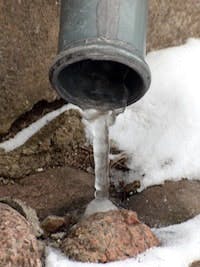While most of the country braces for more snow and ice, adding on to an already record breaking season, the water infrastructure is cracking below. As a result, when the thaw does come, pipes may break above and below ground causing massive water loss and high utility costs.
Costs can be substantially higher for commercial, multi-family and institutional properties if proactive steps are not being taken.
"As water freezes, it expands within the pipe or wherever it is trapped," said John Lie-Nielsen, CEO of WaterSignal. "With an aging infrastructure with old pipes dating back many years, the likelihood of the pipe bursting is higher now than any other time during the year. The problem is that no one will see the effects of the break until the ice thaws.
"While most assume that main breaks—the ones you see—do the most damage, it's the underground breaks no one sees that really costs us the most water, time, and money. In most cases, people only realize there is a leak when they receive their water bill 30 to 90 days afterward and the cost is 10 times higher."
Lie-Nielsen recommends taking a proactive role in monitoring water usage during this turbulent season. Much like property and facility managers do with energy use, monitoring water use on a daily or hourly basis can pinpoint problems if water spikes above a preset limit - indicating a leak. Taking these proactive steps can help save thousands of gallons, as well as a great deal of money.
Before the thaw begins, Lie-Nielsen recommends installing a WaterSignal system to begin monitoring water usage at the meter on an hourly basis to note trends and spikes that may indicate a leak. If a water spike occurs, an alert is immediately sent to the property manager.
As the thaw begins, tour the property and look for wet spots and alligatored, heaving or cracked pavement—clues to underground leaks. If a leak is suspected, check the water meter and write the usage down. Turn off the water and after a two-hour period when no water is being used, check the meter again. If the meter does not read exactly the same, there probably is a leak.
Other clues of an underground leak include:
- Clear water running in storm drains when it has not rained recently;
- An area that is green, moldy, soft or mossy surrounded by drier conditions; and
- Sinkholes or potholes that suddenly appear.
Source: WaterSignal

